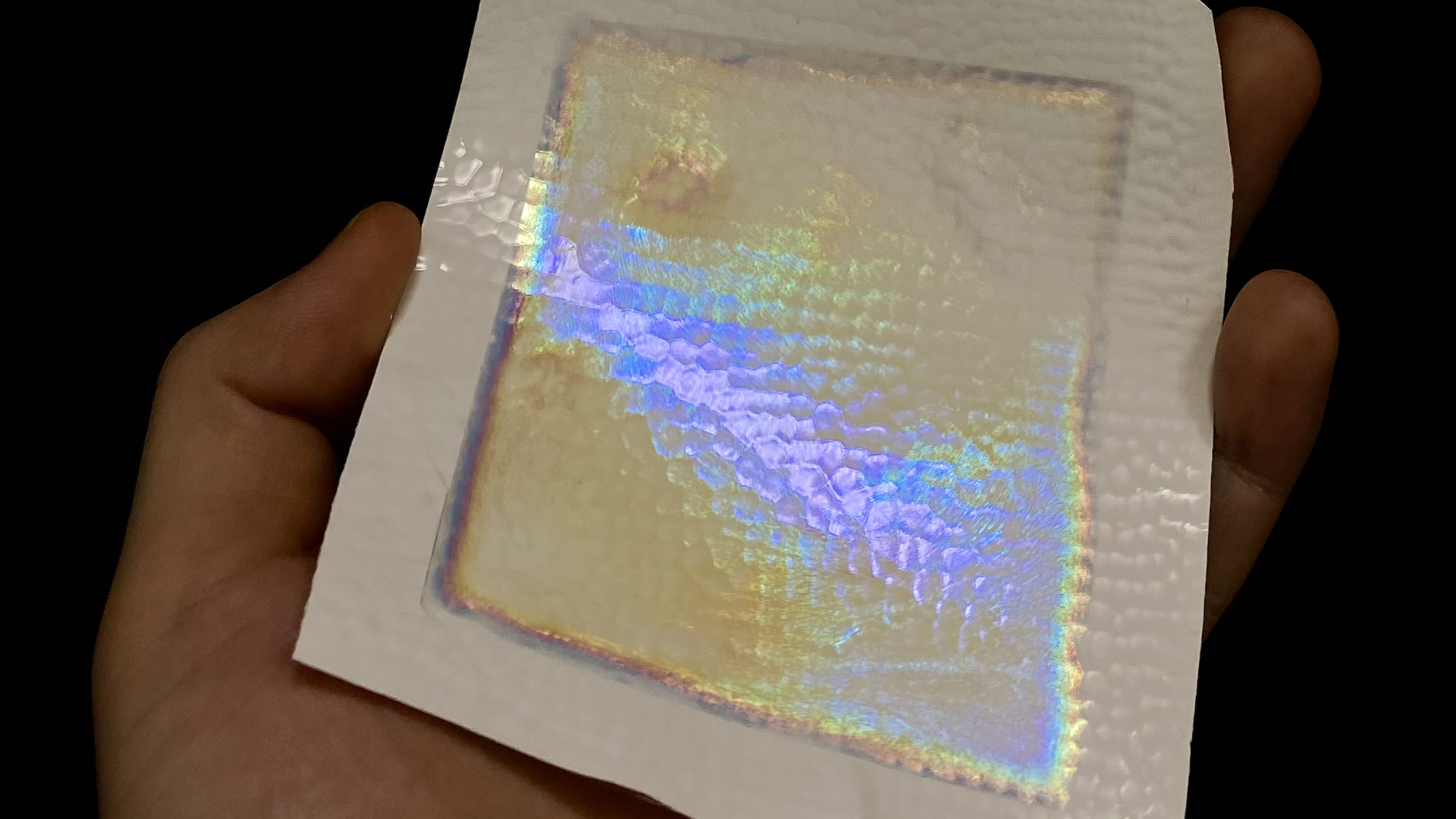

A new, colorful material partially made from wood pulp and cotton could one day help lower building temperatures when exposed to sunlight. And while similar films already exist utilizing either white or mirrored finishes, the newest variant offers iridescent hues thanks in part to cellulose nanocrystals (CNCs) and the behavior of soap bubbles.
[Related: Scientists think this tiny greenhouse could be a game changer for agrivoltaics.]
Generally speaking, most objects will warm as they absorb the sun’s UV, infrared, and visible light. What isn’t absorbed is then reflected out as visible color. That said, a process known as passive daytime radiative cooling (PDRC) can occasionally counteract the rising temperatures caused by absorbing light. PDRC occurs when a surface reflects a large amount of solar light back out as infrared rays without absorbing much else. This allows for surfaces that can be many degrees cooler than the air around it. Recently, researchers at the University of Cambridge discovered they could replicate this ability by capitalizing on certain plant cellulose properties alongside “structural color,” which results from light interacting with a surface’s varying thicknesses. This ability is most commonly seen within soap bubbles, which diffuse light in different directions across their varyingly thick surfaces to create kaleidoscopic patterns.
As New Scientist also notes, adding color pigment to a material usually increases the amount of light, and therefore heat, it absorbs. However, when researchers extracted cellulose nanocrystals from plants, then layered them atop a reflective sheet made of ethyl cellulose, they were able to use their prismatic properties to create red, green, and blue-colored films. Even with their new hues, the coatings remained around 3 degrees Celsius cooler than surrounding temperatures in direct sunlight.
[ Related: Scientists use quantum computing to create glass that cuts the need for AC by a third.]
With additional experimentation on the layers of ethyl cellulose, the team also managed to produce multicolored films with a variety of textures, such as various woodgrains and finishes. Although the new films’ durability still needs improvement, their potential utility could one day extend to the building facades, vehicles, and indoor wall paints as an eco-friendly alternative to the use of A/C units, which are notorious for both energy consumption and greenhouse gas emissions. The team is presenting their latest results at the American Chemical Society’s annual spring meeting, and hopes to continue their research to improve future generations of the material.
